Non-metallic pipes have become increasingly significant in various industries due to their unique properties and advantages over traditional metallic pipes. These pipes, which can be made from materials such as plastic, fiberglass, and composites, offer a range of benefits including corrosion resistance, light weight, and cost-effectiveness. This article explores the types of non-metallic pipes, their applications, advantages, and future trends, providing a comprehensive understanding of this crucial component in modern infrastructure.
1. Introduction to Non-Metallic Pipes
Non-metallic pipes are pipes made from materials that do not include metals. Instead, they are crafted from synthetic polymers, ceramics, glass, or composite materials. They are widely used in various applications, from residential plumbing to industrial processes, due to their distinctive properties that cater to specific needs and environments.
1.1 Definition and Types
Non-metallic pipes are characterized by their composition and properties, differing significantly from metallic pipes in terms of physical characteristics and performance. Common types include:
- Plastic Pipes: Made from polymeric materials like PVC (Polyvinyl Chloride), CPVC (Chlorinated Polyvinyl Chloride), and PEX (Cross-linked Polyethylene).
- Fiberglass Pipes: Composed of glass fibers and resin, providing high strength and durability.
- Composite Pipes: Constructed from a combination of materials, such as fiberglass and thermoplastics, to leverage the benefits of both.

2. Advantages of Non-Metallic Pipes
Non-metallic pipes offer several advantages that make them suitable for a variety of applications. Here, we delve into some of the primary benefits:
2.1 Corrosion Resistance
Unlike metals, many non-metallic pipes are highly resistant to corrosion and chemical degradation. This property is particularly beneficial in environments where pipes are exposed to harsh chemicals or moisture. For instance:
- PVC and CPVC Pipes: Resistant to many acids, alkalis, and salts, making them ideal for chemical processing.
- Fiberglass Pipes: Corrosion-resistant and suitable for handling corrosive fluids in industrial settings.
2.2 Lightweight and Easy to Handle
Non-metallic pipes are typically much lighter than their metallic counterparts. This reduces transportation and installation costs and simplifies handling on site. The lightweight nature of these pipes also leads to less strain on supporting structures and lower installation labor costs.
2.3 Flexibility and Ease of Installation
Materials like PEX offer flexibility, allowing for easier installation, especially in tight spaces or complex layouts. Non-metallic pipes often do not require special tools or welding, which speeds up the installation process.
2.4 Insulation Properties
Many non-metallic pipes have excellent thermal insulation properties, reducing heat loss in hot water systems and preventing condensation in cold water systems. This can contribute to energy savings and improved efficiency in various applications.
2.5 Cost-Effectiveness
In many cases, non-metallic pipes are more cost-effective than their metallic counterparts. The lower material and installation costs can be particularly advantageous for large-scale projects or applications where budget constraints are significant.
3. Types of Non-Metallic Pipes
Depending on the exact non-metallic pipe material used for manufacture of the pipe, there are several types of non-metallic pipes.
3.1 Plastic Pipes
Plastic pipes are among the most commonly used non-metallic pipes, encompassing various types and grades.
3.1.1 Polyvinyl Chloride (PVC) Pipes
PVC pipes are widely used due to their versatility, affordability, and ease of installation. They are commonly used in residential and commercial plumbing, irrigation, and drainage systems. Key characteristics include:
- Durability: Resistant to impact and wear.
- Corrosion Resistance: Not susceptible to rust or corrosion.
- Low Cost: Economical compared to metals.
3.1.2 Chlorinated Polyvinyl Chloride (CPVC) Pipes
CPVC pipes are similar to PVC but with added chlorine, making them suitable for hot water applications. They are often used in domestic hot and cold water systems and industrial processes.
- Temperature Resistance: Can handle temperatures up to 200°F (93°C).
- Chemical Resistance: Effective in handling various chemicals.
3.1.3 Cross-Linked Polyethylene (PEX) Pipes
PEX pipes are known for their flexibility and resistance to temperature extremes. They are widely used in residential plumbing and heating systems.
- Flexibility: Can be bent around obstacles without the need for joints.
- Freeze Resistance: Less likely to burst if water inside freezes.
3.2 Fiberglass Pipes
Fiberglass pipes are made from a combination of glass fibers and resin. They are particularly valued in industries requiring high strength and resistance to chemical attack.
- Strength: High tensile strength and impact resistance.
- Lightweight: Easier to handle and install compared to metals.
3.3 Composite Pipes
Composite pipes combine various materials to optimize performance. Common composites include fiberglass-reinforced plastic (FRP) and carbon fiber-reinforced plastic (CFRP).
- High Performance: Offer enhanced strength-to-weight ratios.
- Customization: Tailored to specific applications and environmental conditions.
3.4 Miscellaneous Non-Metallic Pipes
The above non-metallic pipes are the most common pipe materials. Additional to these, the following pipes are also found in some applications of non-metallic pipes:
3.4.1 Clay Pipes
Clay pipes, traditionally made from fired clay, have been used for centuries in various applications, particularly in drainage and sewer systems. Their natural durability and resistance to corrosion make them suitable for handling wastewater and sewage, as well as for agricultural drainage. Clay pipes are still employed in some modern applications, especially in restoration projects and where historical authenticity is required. They are valued for their long service life and resistance to environmental degradation, although their brittle nature and relatively high installation costs have led to a decline in their use in favor of more modern materials.
3.4.2 Concrete Pipes
Concrete pipes are widely used in infrastructure projects due to their strength and durability. They are commonly utilized in stormwater drainage systems, sewerage, and water supply networks. The inherent compressive strength of concrete makes these pipes suitable for handling high-pressure applications and heavy loads. Reinforced concrete pipes (RCP), which incorporate steel reinforcement, are particularly effective for high-stress environments. Concrete pipes are valued for their longevity and load-bearing capacity, but their heavy weight can pose challenges during installation and transportation. Advances in concrete technology, including the use of fiber reinforcement, have further enhanced their performance and versatility.
3.4.3 Wood Pipes
Wood pipes, though less common today, were historically used for water transportation and irrigation. Made from hollowed-out tree trunks or logs, they provided a practical solution in pre-industrial times. Wooden pipes were used in ancient aqueducts and early plumbing systems, leveraging the natural availability of wood. Despite their historical significance, wood pipes are rarely used in modern applications due to their susceptibility to decay, limited lifespan, and challenges related to maintaining a consistent flow and pressure. However, they are sometimes employed in niche applications, such as in the restoration of historic sites or for aesthetic purposes in specialized landscaping projects.
3.4.4 Glass Pipes
Glass pipes are utilized in specific applications where their unique properties are advantageous. They are commonly found in laboratory settings, where their inertness and clarity make them ideal for handling chemicals and monitoring fluid flow. Glass pipes offer excellent resistance to corrosion and are easy to clean, which is crucial for maintaining the integrity of experiments and processes. Additionally, their smooth interior surfaces minimize friction loss, enhancing flow efficiency. In architectural and design applications, glass pipes can be used for aesthetic purposes, adding a modern and visually appealing element to installations. Despite their benefits, the fragility of glass and the higher cost compared to other materials limit their use to specialized applications.
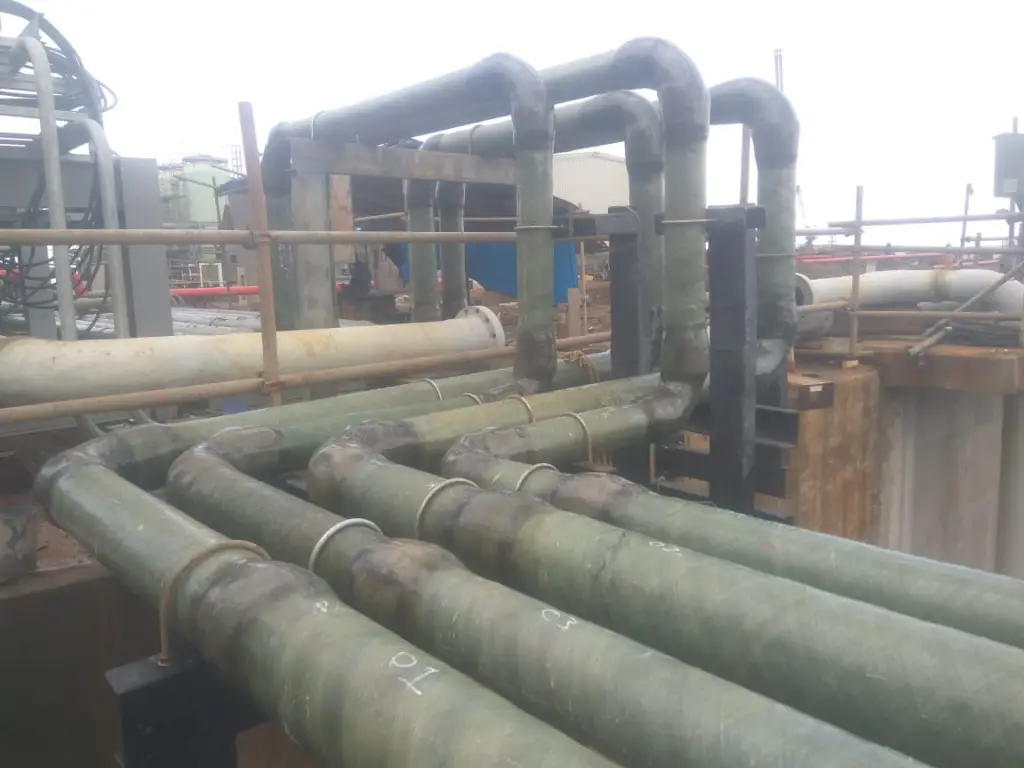
4. Applications of Non-Metallic Pipes
The versatility of non-metallic pipes means they are used in a wide range of applications. Here are some notable uses:
4.1 Residential Plumbing
Non-metallic pipes like PVC and PEX are commonly used in residential plumbing systems due to their ease of installation and resistance to corrosion.
- Water Supply: PEX and CPVC are often used for water supply lines.
- Drainage: PVC is widely used for drainage and waste pipes.
4.2 Industrial Applications
In industrial settings, non-metallic pipes are used for handling chemicals, gases, and other substances.
- Chemical Processing: CPVC and fiberglass pipes are used to transport corrosive chemicals.
- Oil and Gas: Composite pipes are used in some oil and gas applications due to their strength and resistance to harsh conditions.
4.3 Irrigation Systems
Plastic pipes like PVC and polyethylene are frequently used in agricultural irrigation systems due to their durability and resistance to environmental factors.
- Drip Irrigation: PVC and polyethylene pipes are used for drip irrigation systems that deliver water directly to the plant roots.
- Sprinkler Systems: Plastic pipes are also used in various types of sprinkler systems.
4.4 HVAC Systems
Non-metallic pipes are used in heating, ventilation, and air conditioning (HVAC) systems for their thermal insulation properties and flexibility.
- Ventilation: PVC and fiberglass pipes are used in ductwork for ventilation systems.
- Heating: PEX is commonly used in radiant heating systems due to its flexibility and thermal efficiency.
5. Challenges and Considerations
While non-metallic pipes offer many advantages, they also come with their own set of challenges and considerations.
5.1 Temperature Limitations
Some non-metallic pipes have limitations regarding temperature. For example, while PEX is flexible and freeze-resistant, it may not be suitable for extremely high-temperature applications. Understanding the temperature tolerance of each pipe type is crucial for ensuring optimal performance.
5.2 Mechanical Strength
Non-metallic pipes, particularly plastics, may have lower mechanical strength compared to metals. This can be a concern in high-pressure applications or where mechanical impact is a factor. Composite pipes often address this limitation by combining materials to enhance strength.
5.3 Environmental Impact
The production and disposal of non-metallic pipes, especially plastics, can have environmental impacts. Efforts are being made to improve the sustainability of these materials, such as through recycling programs and the development of biodegradable alternatives.
5.4 Installation and Compatibility
While non-metallic pipes can be easier to install, compatibility with existing systems and materials is an important consideration. Proper installation practices are essential to avoid issues like leaks or joint failures.
6. Non-Metallic Piping Standards
The codes and standards for non-metallic pipes ensure that these materials meet specific requirements for quality, safety, and performance. These standards are developed by various organizations and provide guidelines for manufacturing, testing, and application of non-metallic piping systems. Below is an overview of some key codes and standards for different types of non-metallic pipes:
6.1 Plastic Pipes
6.1.1 Polyvinyl Chloride (PVC) Pipes
- ASTM D1785: Standard Specification for PVC Pipe, Schedules 40, 80, and 120
- Covers the requirements for PVC pipe used in pressure systems.
- ASTM D2665: Standard Specification for PVC Plastic Drain, Waste, and Vent Pipe and Fittings
- Addresses specifications for PVC pipes used in non-pressure applications.
- ASTM D2846: Standard Specification for Chlorinated Polyvinyl Chloride (CPVC) Pipe, Schedules 40, 80, and 120
- Provides specifications for CPVC pipes, including those used for hot water systems.
- ASTM F441: Standard Specification for CPVC Plastic Pipe and Fittings
- Covers the requirements for CPVC pipe and fittings for various applications.
6.1.2 Cross-Linked Polyethylene (PEX) Pipes
- ASTM F876: Standard Specification for Cross-Linked Polyethylene (PEX) Tubing
- Specifies the requirements for PEX tubing, including material properties, dimensions, and performance.
- ASTM F877: Standard Specification for PEX Plastic Hot- and Cold-Water Distribution Systems
- Covers the requirements for PEX systems used in hot and cold water distribution.
- ASTM F1960: Standard Specification for PEX Plastic Hot- and Cold-Water Distribution Systems
- Details the performance characteristics of PEX fittings used with PEX tubing.
6.2 Fiberglass Pipes
- ASTM D2996: Standard Specification for Filament-Wound Fiber-Reinforced Thermosetting Resin Pipe
- Provides specifications for filament-wound fiberglass pipes used in various industrial applications.
- ASTM D3517: Standard Specification for Glass-Fiber-Reinforced Plastic (GRP) Pipe
- Outlines requirements for GRP pipes, including material composition, dimensions, and performance.
- ASME RTP-1: Reinforced Thermoset Plastic Corrosion-Resistant Equipment and Piping
- Offers guidelines for the design, materials, and testing of reinforced thermoset plastic pipes, including fiberglass.
6.3 Composite Pipes
- ASTM D1998: Standard Specification for Polyethylene (PE) Plastic Pipe (DR-PR) Based on Outside Diameter
- Covers requirements for composite pipes that include polyethylene as one of their components.
- ASTM D3694: Standard Specification for Reinforced Thermosetting Resin (RTR) Pipe
- Provides guidelines for RTR pipes, which may include composite materials such as fiberglass.
- ISO 14692: Petroleum and natural gas industries — Glass-reinforced plastics (GRP) piping
- Specifies the requirements for GRP piping systems used in the oil and gas industry.
6.4 General Codes and Standards
- ISO 9001: Quality management systems – Requirements
- Although not specific to non-metallic pipes, compliance with ISO 9001 can ensure that the manufacturing processes meet quality management standards.
- NFPA 13: Standard for the Installation of Sprinkler Systems
- Provides guidelines that may include the use of non-metallic pipes for sprinkler systems.
- ASME B31.3: Process Piping
- Includes specifications that may apply to non-metallic pipes used in process piping systems.
6.5 Installation and Testing Standards
- ASTM F1960: Standard Specification for PEX Plastic Hot- and Cold-Water Distribution Systems
- Includes installation guidelines for PEX systems.
- ASTM F2023: Standard Guide for the Installation of PEX Systems
- Provides recommendations and best practices for installing PEX piping systems.
- ASTM D2152: Standard Test Methods for the Evaluation of the Effects of a Specific Chemical Environment on the Tensile Properties of Plastics
- Details testing methods for evaluating how chemicals affect plastic pipes.
6.6 Environmental and Safety Standards
- ASTM D3350: Standard Specification for Polyethylene Plastics Pipe and Fittings Materials
- Specifies environmental and safety considerations for polyethylene pipes.
- ISO 14001: Environmental Management Systems
- Although not specific to non-metallic pipes, compliance with ISO 14001 can help manage environmental impacts related to the production and disposal of pipes.
7. Differences Between Non-Metallic and Metallic Piping
When selecting piping materials for various applications, understanding the differences between non-metallic and metallic pipes is crucial. Both types have distinct properties that make them suitable for specific conditions and uses. Here’s a comprehensive comparison of non-metallic and metallic piping systems across several key aspects:
7.1 Material Composition
Non-Metallic Pipes
- Plastic: Includes materials such as Polyvinyl Chloride (PVC), Chlorinated Polyvinyl Chloride (CPVC), and Cross-Linked Polyethylene (PEX).
- Fiberglass: Composed of glass fibers embedded in resin.
- Composites: Made from a combination of materials, such as fiberglass and thermoplastics.
Metallic Pipes
- Steel: Includes Carbon Steel, Stainless Steel, and Alloy Steel.
- Copper: Used in plumbing and refrigeration systems.
- Aluminum: Lightweight and resistant to corrosion, used in various applications.
7.2 Mechanical Properties
Non-Metallic Pipes
- Flexibility: Generally more flexible, especially PEX pipes, which can bend around obstacles without fittings.
- Strength: While non-metallic pipes are strong, they typically have lower tensile and impact strength compared to metals. Composite pipes can offer enhanced strength.
- Weight: Much lighter than metallic pipes, easing handling and installation.
Metallic Pipes
- Strength: High tensile and impact strength, making them suitable for high-pressure and heavy-duty applications.
- Weight: Heavier, which can increase transportation and installation costs.
7.3 Corrosion and Chemical Resistance
Non-Metallic Pipes
- Corrosion Resistance: Highly resistant to corrosion and chemical degradation. PVC, CPVC, and PEX are not susceptible to rust.
- Chemical Resistance: Various non-metallic pipes are resistant to specific chemicals, though this varies by material. For example, CPVC handles a wider range of chemicals compared to PVC.
Metallic Pipes
- Corrosion Resistance: Susceptible to rust and corrosion unless treated or alloyed. Stainless steel offers better resistance compared to carbon steel.
- Chemical Resistance: Metal pipes, especially those made from alloyed or coated materials, can resist certain chemicals but often require protective linings or coatings.
7.4 Temperature Tolerance
Non-Metallic Pipes
- Temperature Range: Generally have lower temperature tolerance. PEX can handle temperatures up to about 200°F (93°C), while CPVC can handle higher temperatures.
- Thermal Insulation: Often have better natural thermal insulation properties compared to metals.
Metallic Pipes
- Temperature Range: Can handle higher temperatures. For example, steel pipes can withstand temperatures above 1000°F (537°C) when properly treated.
- Thermal Conductivity: Metals conduct heat more effectively, which can lead to heat loss or gain unless properly insulated.
7.5 Installation and Maintenance
Non-Metallic Pipes
- Installation: Typically easier and quicker to install. Many non-metallic pipes can be cut and assembled with simple tools, and PEX does not require joints in most applications.
- Maintenance: Generally low-maintenance due to resistance to corrosion and scale buildup. However, some non-metallic pipes can be damaged by UV exposure and may require protection.
Metallic Pipes
- Installation: Can be more complex and require welding or threaded connections. Heavyweight can also complicate handling and installation.
- Maintenance: May require regular inspection and maintenance to prevent rust and corrosion. Metal pipes can accumulate scale and require cleaning or replacement in high-sediment areas.
7.6 Cost
Non-Metallic Pipes
- Material Cost: Usually lower than metals, making them cost-effective for large-scale or low-budget projects.
- Installation Cost: Generally lower due to ease of handling and fewer required fittings.
Metallic Pipes
- Material Cost: Typically higher, especially for materials like stainless steel and copper.
- Installation Cost: Higher due to the need for specialized tools and labor, such as welding or threading.
7.7 Environmental Impact
Non-Metallic Pipes
- Production: Production processes for plastics and composites can be energy-intensive and have environmental impacts. However, advancements in recycling and biodegradable materials are addressing these concerns.
- End-of-Life: Non-metallic pipes can be challenging to recycle, though efforts are being made to improve recycling processes.
Metallic Pipes
- Production: Metal pipe production also has significant environmental impacts, including energy use and emissions. However, metals are generally more recyclable than plastics.
- End-of-Life: Metals are often more easily recycled, which can mitigate some of the environmental impact.
7.8 Applications
Non-Metallic Pipes
- Residential Plumbing: PVC, CPVC, and PEX are commonly used for water supply and drainage in homes.
- Chemical Processing: CPVC and fiberglass are used due to their resistance to corrosive substances.
- Irrigation: PVC and polyethylene pipes are widely used in agricultural irrigation systems.
Metallic Pipes
- Industrial Applications: Steel and stainless steel are used in high-pressure and high-temperature environments, such as in oil and gas pipelines.
- Plumbing and Heating: Copper pipes are used in plumbing and heating systems due to their thermal conductivity and antibacterial properties.
- Structural Applications: Metals are used where high strength and load-bearing capacity are required.
The above differences between non-metallic and metallic pipes can be summarized as follows:
| Aspect | Non-Metallic Pipes | Metallic Pipes |
|---|---|---|
| Material Composition | – Plastic (PVC, CPVC, PEX) – Fiberglass – Composites (e.g., FRP) | – Steel (Carbon, Stainless, Alloy) – Copper – Aluminum |
| Mechanical Properties | – Flexibility: Generally more flexible – Strength: Lower tensile and impact strength compared to metals; composites improve strength – Weight: Lighter | – Flexibility: Less flexible – Strength: High tensile and impact strength – Weight: Heavier |
| Corrosion & Chemical Resistance | – Corrosion: Highly resistant to corrosion – Chemical Resistance: Good, but varies by material (e.g., CPVC better for chemicals than PVC) | – Corrosion: Susceptible to rust; stainless steel more resistant – Chemical Resistance: Varies; metals often need coatings or linings |
| Temperature Tolerance | – Range: Lower temperature tolerance (e.g., PEX up to 200°F/93°C) – Thermal Insulation: Better natural insulation properties | – Range: Higher temperature tolerance (e.g., steel above 1000°F/537°C) – Thermal Conductivity: Higher, which can lead to heat loss/gain |
| Installation & Maintenance | – Installation: Easier and quicker; often requires fewer tools – Maintenance: Low maintenance; resistant to corrosion and scale buildup but can be UV-sensitive | – Installation: More complex; often requires welding or threading – Maintenance: Higher maintenance; prone to rust, corrosion, and scale buildup |
| Cost | – Material Cost: Generally lower – Installation Cost: Lower due to ease of handling | – Material Cost: Generally higher – Installation Cost: Higher due to complexity and weight |
| Environmental Impact | – Production: Can be energy-intensive; recycling efforts underway – End-of-Life: Recycling can be challenging | – Production: Significant environmental impact, but metals are recyclable – End-of-Life: Easier to recycle |
| Applications | – Residential Plumbing: PVC, CPVC, PEX for water supply and drainage – Chemical Processing: CPVC, fiberglass for corrosive substances – Irrigation: PVC, polyethylene | – Industrial Applications: Steel, stainless steel for high-pressure/high-temperature uses – Plumbing and Heating: Copper for plumbing and heating – Structural: Metals for load-bearing applications |
8. Conclusion
Non-metallic pipes offer a range of benefits that make them suitable for a diverse array of applications. Their advantages in terms of corrosion resistance, lightweight nature, and cost-effectiveness position them as valuable alternatives to traditional metallic pipes. As technology advances and environmental considerations become more prominent, the development and use of non-metallic pipes are expected to evolve, continuing to meet the needs of various industries while addressing sustainability challenges.

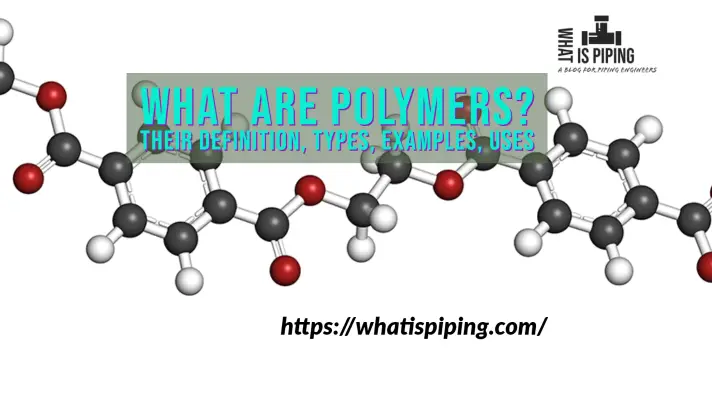


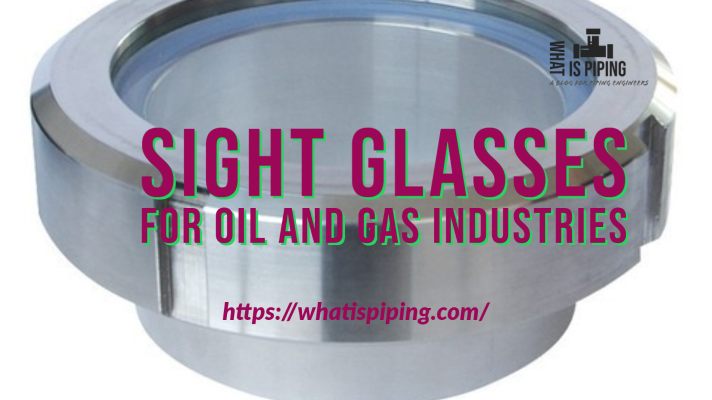


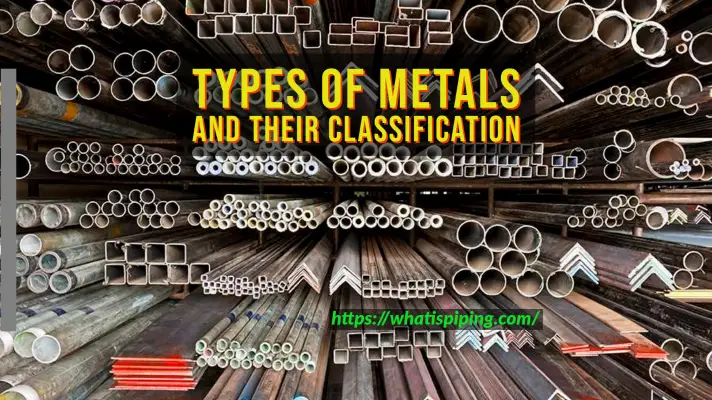
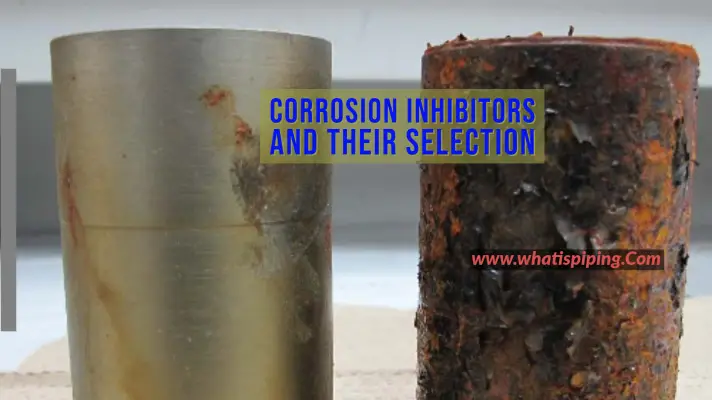
I need non metallic chilled water piping above false ceiling for connecting cassette type AC’s in office complex. What material to use? Availability in Mumbai?